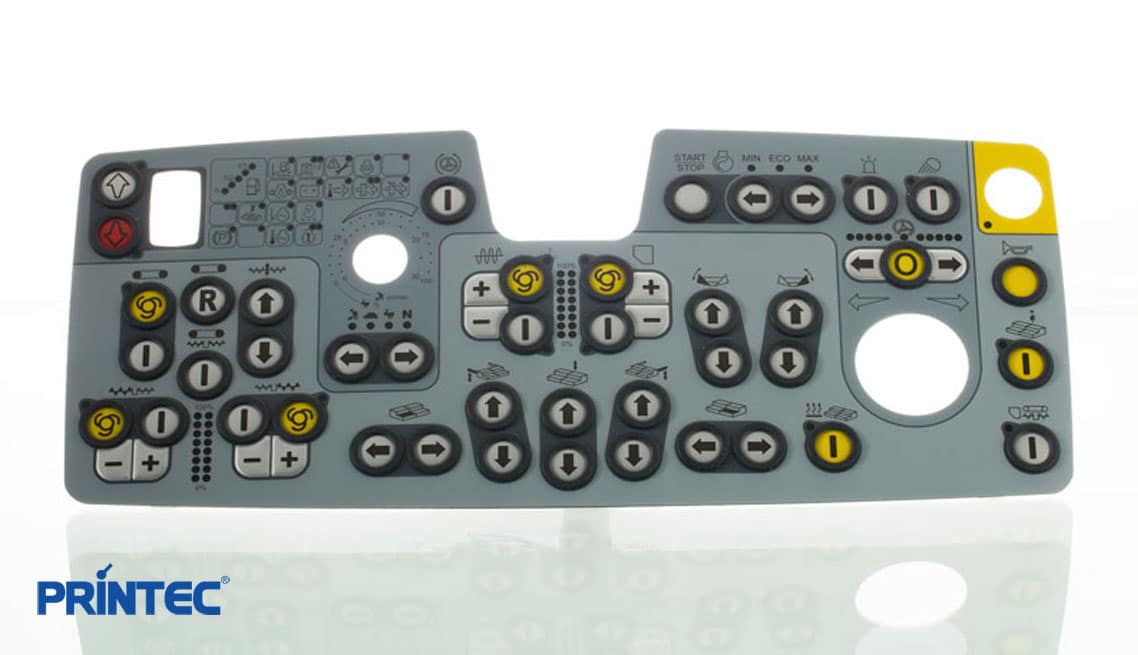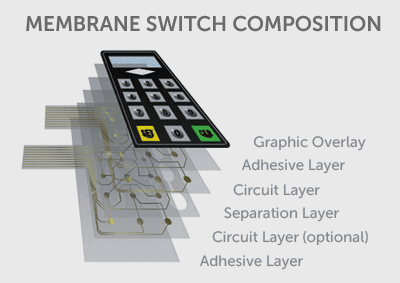How a Membrane Switch Enhances User Experience in Modern Electronics
How a Membrane Switch Enhances User Experience in Modern Electronics
Blog Article
The Advantages of Making Use Of Membrane Layer Changes in Consumer Electronics
Membrane switches are progressively recognized for their substantial advantages in customer electronic devices, especially in improving individual interaction and improving production processes. Their capability to provide instinctive interfaces and tactile responses can greatly reduce user mistakes, while their light-weight building and construction and streamlined manufacturing steps contribute to cost-effectiveness and quicker market entry. The convenience in layout permits for customized options that satisfy varied customer needs. The ramifications of these benefits expand past mere functionality, hinting at a transformative potential for the future of electronic devices. What further benefits might become this technology develops?
Boosted User Experience
In today's competitive landscape of customer electronic devices, enhanced customer experience is extremely important; virtually 85% of users focus on instinctive user interfaces. Membrane layer changes play a crucial function in achieving this level of usability. Their flat, low-profile style enables for seamless assimilation right into numerous tools, lowering mass while keeping functionality. This design aesthetic not only boosts the aesthetic allure however additionally adds to a more structured user communication.
The responsive responses supplied by membrane switches is essential for assisting user activities, ensuring that commands are signed up properly. This comments device heightens and decreases errors user complete satisfaction, cultivating a positive connection in between the device and the individual. Additionally, the adjustable nature of membrane layer switches enables manufacturers to tailor user interfaces to details user requirements, making tools much more accessible and inviting.
Additionally, membrane buttons can incorporate backlighting and graphic overlays, further enhancing exposure and functionality in diverse atmospheres. This flexibility guarantees that tools continue to be useful and straightforward, regardless of the setup. In general, the assimilation of membrane switches over right into customer electronics considerably enhances customer experience, driving brand name commitment and fulfillment in an increasingly open market.
Economical Manufacturing
Customer electronic devices makers are frequently seeking ways to balance top quality with price, and membrane buttons use an engaging solution for economical manufacturing. membrane switch. These parts are naturally easier than standard mechanical switches, which minimizes both manufacturing expenses and intricacy. The light-weight layout of membrane changes enables lower delivery costs and less complicated integration into small tools, even more boosting their appeal in a competitive market

Producers can generate membrane layer switches in high quantities, capitalizing on economies of range. This automation ability makes sure constant top quality while substantially reducing per-unit costs. In addition, the products utilized in membrane switches, such as polyester and polycarbonate, are often cheaper than those needed for conventional switch innovations, adding to general cost financial savings.
The production process for membrane layer changes usually requires less steps and much less labor contrasted to other button types. This structured technique not only saves on labor expenses but likewise accelerates time-to-market, enabling companies to react promptly to customer need. The mix of lowered material expenses and efficient production procedures placements membrane changes as a wise investment for producers intending to deliver top quality customer electronics at affordable cost points.
Style Flexibility and Customization
While standard mechanical buttons usually impose limitations on design as a result of their mass and required mounting mechanisms, membrane buttons provide unmatched versatility and customization options for consumer electronics. This innovative technology permits designers to create sleek, inconspicuous user interfaces that can perfectly integrate right into numerous product looks, from smartphones to kitchen area home appliances.
Membrane layer switches can be created in practically any kind of form or dimension, allowing makers to tailor the layout to particular ergonomic and useful needs. This flexibility not only enhances customer experience but also permits imaginative designs that straighten with brand name identification. The usage of printed graphics on membrane you could try these out layer switches provides the possibility for dynamic colors and intricate layouts, which can be quickly modified without significant price effects.
In addition, membrane layer buttons can integrate multiple performances right into a single layer, decreasing the requirement for numerous components and streamlining setting up procedures. This streamlined layout approach reduces room and weight, making it optimal for small customer electronics. Overall, the layout versatility and customization capacities of membrane layer switches empower producers to introduce, inevitably leading to more interesting and easy to use items.
Toughness and Integrity
As technology remains to advance, the resilience and integrity of membrane switches have actually become important factors to consider for suppliers in the customer electronic devices sector. Membrane buttons are designed to withstand severe environmental problems, including temperature level changes, dampness, and dust exposure. Their durable construction usually involves multi-layered products that give an effective barrier against impurities, guaranteeing durability and constant efficiency.
In addition to environmental resistance, membrane switches over deal superior mechanical integrity. Unlike conventional mechanical switches, which might wear with time, membrane layer switches over utilize a sealed layout that minimizes the threat of mechanical failing. The absence of moving parts not just boosts their lifespan but also reduces deterioration, making them suitable for high-usage applications.
Additionally, membrane layer switches can sustain a substantial number of actuations without loss of capability, typically exceeding millions of cycles (membrane switch). This resilience converts to reduce replacement expenses and decreased downtime for manufacturers and customers alike. On the whole, the combination of ecological durability and mechanical reliability makes membrane layer changes a critical choice for customer electronic devices, making sure that gadgets continue to be efficient and operational throughout their desired lifespan

Streamlined Item Growth
The longevity and integrity of membrane layer switches dramatically add to structured product development in the customer electronic devices sector. By integrating these buttons early in the layout procedure, suppliers can minimize the intricacy and variety of elements called for in their items. Membrane buttons are small and lightweight, allowing for a lot more effective room usage within tools, which can cause my explanation streamlined setting up procedures.

The simplicity of go to my site making membrane buttons additionally plays an important role in product growth. With contemporary printing techniques and materials, production can be scaled effectively, lowering and lessening lead times waste. This results in reduced production costs, improving overall productivity.

Final Thought
Finally, membrane layer switches over dramatically improve consumer electronics by providing an improved customer experience, cost-efficient production procedures, and flexible design options. Their resilience and reliability ensure consistent performance in various atmospheres, while streamlined item growth assists in quicker time-to-market. These advantages collectively add to the development and capability of customer devices, resolving the progressing needs of users properly. The integration of membrane switches stands for a calculated choice for suppliers looking for to optimize product layout and performance.
Membrane buttons are progressively acknowledged for their substantial benefits in customer electronic devices, specifically in enhancing user interaction and streamlining production processes. Furthermore, the products made use of in membrane layer switches, such as polyester and polycarbonate, are typically much less pricey than those needed for conventional switch technologies, adding to overall cost financial savings.
The manufacturing process for membrane layer changes commonly calls for less actions and much less labor compared to other switch types. Unlike typical mechanical switches, which may wear out over time, membrane changes use a closed design that reduces the danger of mechanical failure.In conclusion, membrane changes significantly enhance consumer electronics by providing a boosted individual experience, cost-effective production procedures, and versatile style choices.
Report this page